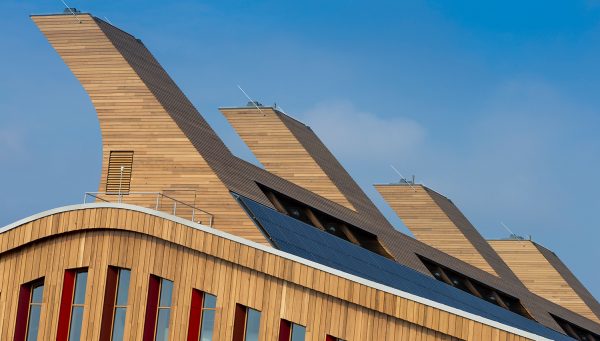
The GSK Centre for Sustainable Chemistry
Revolutionising Sustainability: The Centre for Sustainable Chemistry, a Carbon Neutral Beacon of Innovation
The Centre for Sustainable Chemistry transforms a former industrial brownfield site into a beacon of green chemistry and innovation, set to be carbon neutral in 25 years, and achieving the world’s first LEED ‘Platinum’ and BREEAM ‘Outstanding’ certification status.

“They listen, understand our needs and produced the high quality, good looking building we envisaged.”
Value
The Centre for Sustainable Chemistry establishes a new benchmark for sustainable lab buildings, showing what’s possible when architects, industry, and educators work together to place sustainability at the heart of every decision. Through true dedication and extensive research by all members involved in the conception, design, and construction of the project, this complex facility achieves incredible sustainability feats while maintaining a high functioning laboratory environment.
This building not only reinforces the Universities’ economic resilience, saving approximately £95k in operational costs annually, but also acts as a visual demonstration of the universities’ commitment to future-proofing and as a national landmark of the movement towards a greener future.
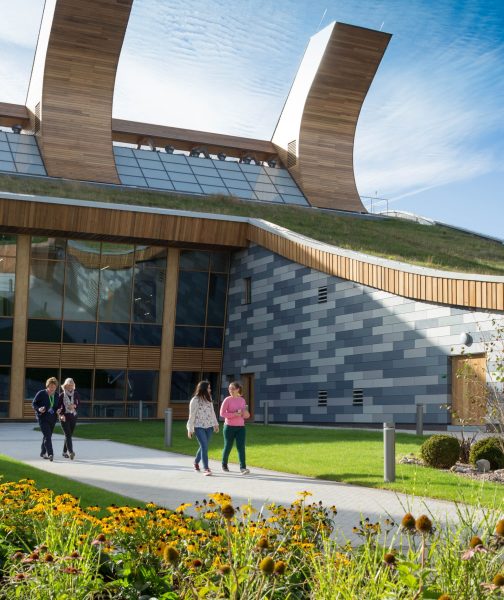
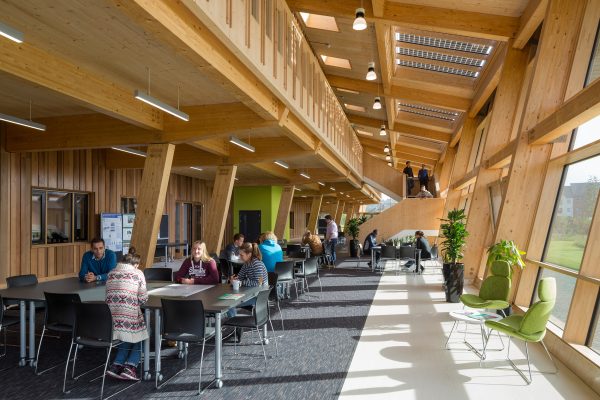
“This is bigger than just a building – it’s a whole philosophy.”
Impact
Standing as the UK’s first carbon neutral chemistry laboratory and achieving the world’s first double certification of BREEAM ‘Excellent’ and LEED ‘Platinum’, the CSC has made a major splash across the construction, design, and academic industries. The visual embodiment eco-conscious design throughout the building has promoted climate-conscious behaviors and decision making amongst its occupants, and has set a notable example for the rest of the scientific community for sustainable lab operation.
Beyond its climate successes, the building provides students, researchers, and visitors with an environment that supports wellbeing and productivity, balancing the typical sterility of laboratory environments. Its success has attracted global talent, helped secure funding, and bolstered the university’s profile, but most importantly, it has provided a highly advanced facility that produces ground-breaking scientific discovery.
“For me, the CSC's function-informed aesthetic, and the congruity between form - the production of carbon neutral electrical power and being built from carbon neutral materials - and purpose - to provide a state-of-the-art research/doctoral training environment for advances in chemical/energy sustainability - provides inspiration and an often elusive sense of hopefulness.”
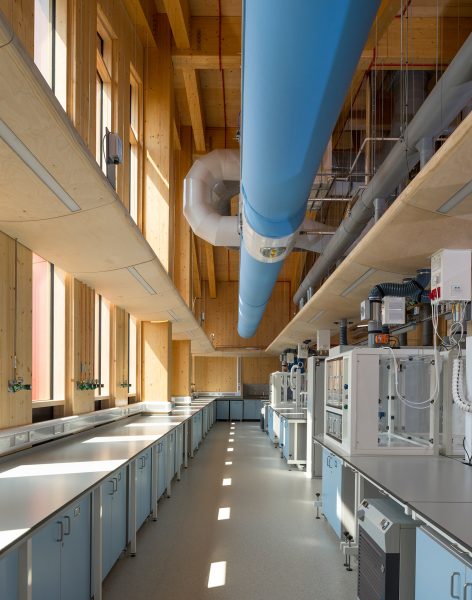
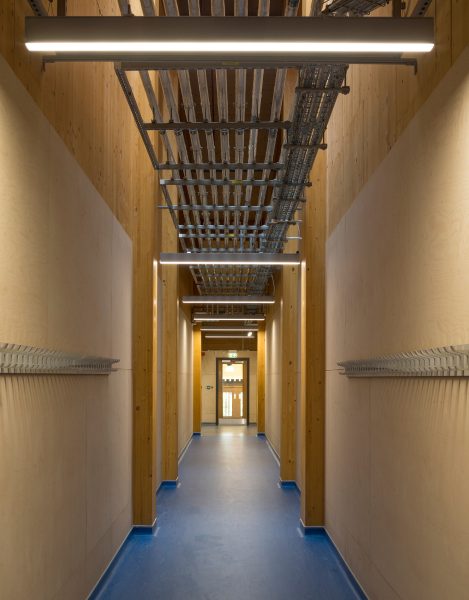
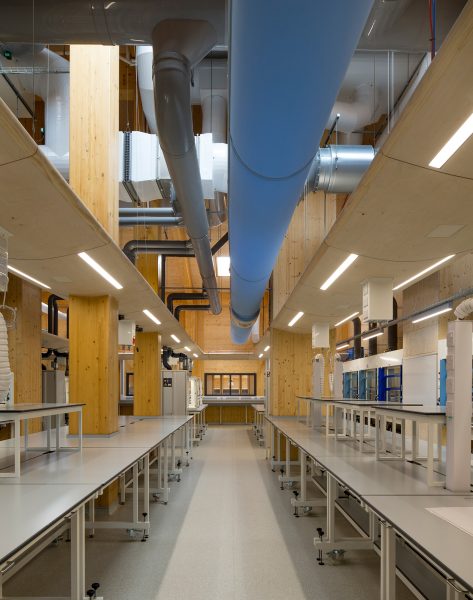
Sustainability
Technical expertise was pivotal in realising the Centre’s ambitious vision to successfully create a proof-of-concept carbon neutral laboratory, and the execution of this goal is visible from every angle of the design.
From the north, a reclaimed stone pathway leads visitors to the entrance which houses a sweeping green roof planted with native grasses, reducing runoff and acting as a carbon sink. From the south, the vast solar farm is visible which uses the roof slope to maximise raw energy exportation year-round. From afar, the ridge ventilators can be seen, which together with the building’s unique shape and the winter garden ‘thermal buffer’ space form a complex system for capturing prevailing wind, guiding it throughout the building, and recovering heat from stale air as it is pushed out.
Inside, the centre is designed to support the demands of advanced research while maintaining a dedicated focus on sustainability and comfort. On top of the extensive use of low-energy and low-usage fittings throughout the building, rigorous consideration was given to the optimisation of resource systems where ecologically expensive materials such as water and helium are reclaimed without hindrance to operation of the labs.
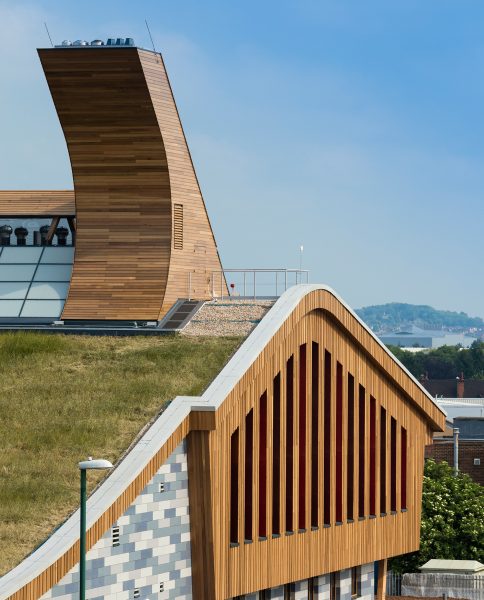
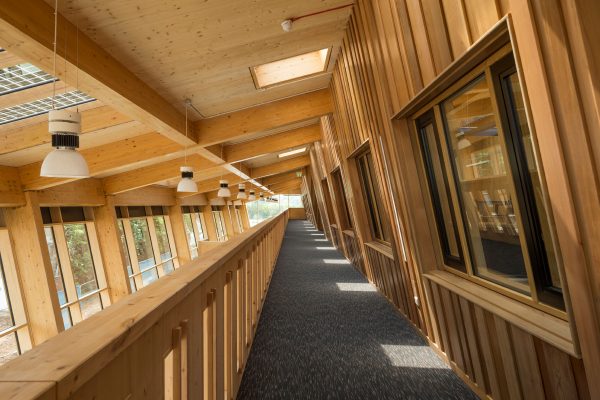
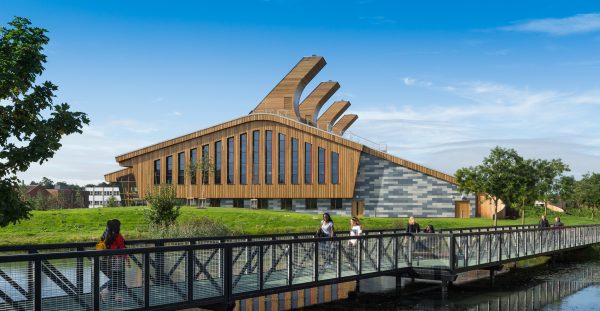
Details
Information
Scope Architecture, Interior Design, Landscape Design, Workplace and Laboratory Design. RIBA Stages 1-6. Novated at Stage 4 Status Completed Completion Date 2015 Location Nottingham Value £16mCollaborators & Partners
Landscape Architect Fairhursts Structural Engineer Aecom MEP Engineer Aecom Photography Martine Hamilton-Knight Timber Specialist EngenuitiAwards
RIBA: East Midlands Award 2018 RIBA: East Midlands Sustainability Award 2018 RICS East Midlands: Project Of The Year & Design Through Innovation Winner 2017 S- Labs: Physical Sciences Building Of The Year 2017 Construction News : Specialists Award 2017 Education Estates: Best Educational Building (Universities And Colleges) In The UK 2016 Structural Timber Awards: Architect, Low Energy, And Overall Project Of The Year - Highly Commended 2016 FBE East Midlands: Non-Residential Project Of The Year & Overall Winner 2016 Brownfield Briefing Awards: Best Sustainable Building On A Brownfield Site 2015
Get in touch:
Mark, Managing Director
